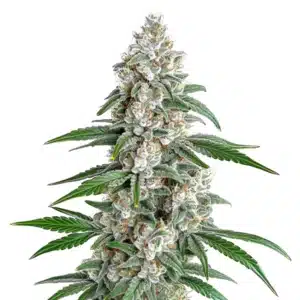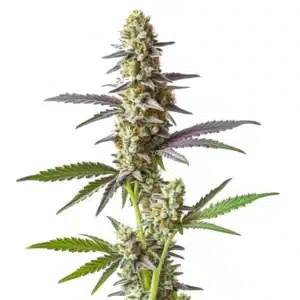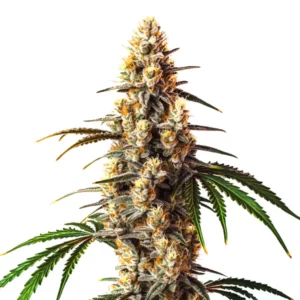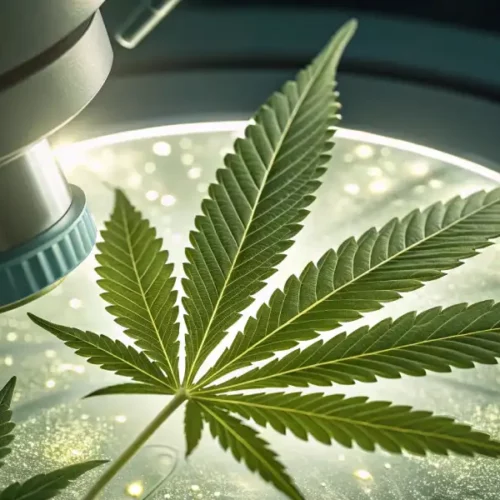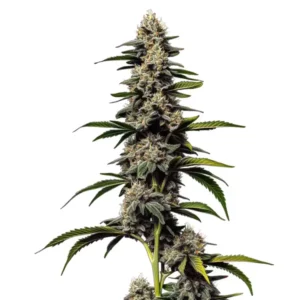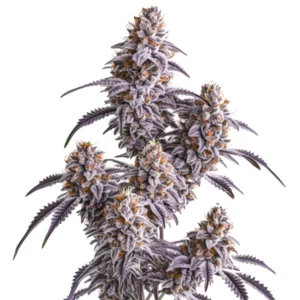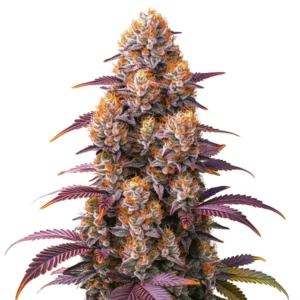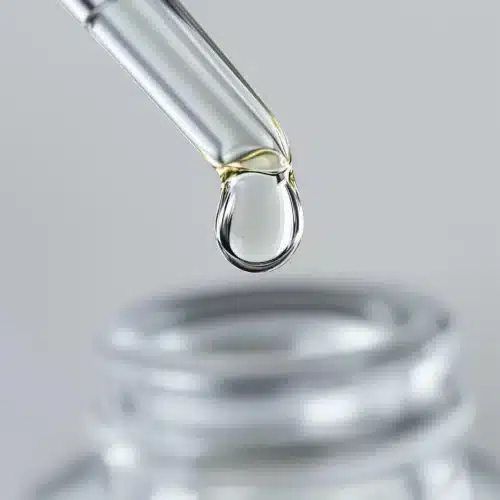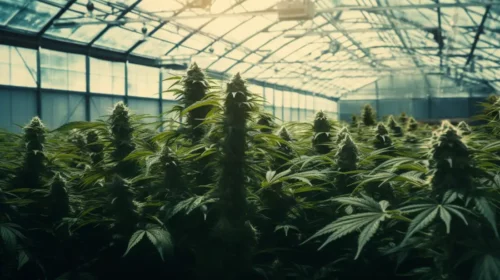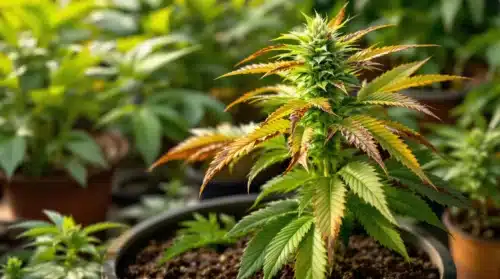Tetrahydrocannabiphorol (THCP) is an emerging cannabinoid that has garnered significant attention within the cannabis community due to its unique properties and potent effects. As a natural compound found in cannabis, THCP is structurally similar to THC but exhibits notable differences that make it a topic of interest for both researchers and consumers. This article delves into the characteristics of THCP, its potential benefits, how it compares to other cannabinoids, and its place in the cannabis industry.
What Makes THCP Unique?
THCP is a phytocannabinoid, meaning it is naturally occurring within the cannabis plant. What sets it apart from THC is its elongated alkyl side chain, which consists of seven carbon atoms instead of the five found in THC. This seemingly small structural difference is significant because it enhances THCP’s ability to bind to cannabinoid receptors in the human body.
Binding Affinity with CB1 and CB2 Receptors
Cannabinoid receptors, particularly CB1 and CB2, play a key role in how cannabinoids affect the body. THCP’s unique structure gives it a binding affinity that is 33 times higher for CB1 receptors compared to THC. This stronger binding may explain why THCP is believed to be more psychoactive and effective at lower doses. Its impact on CB2 receptors also suggests potential benefits for reducing inflammation and improving immune responses.
The binding affinity makes THCP a candidate for both recreational and medical uses. For recreational users, it might offer stronger euphoria and relaxation. For medical applications, the targeted interaction with receptors could make it a powerful tool for managing chronic pain, nausea, or other severe conditions.
Natural Occurrence in Cannabis
Unlike synthetic cannabinoids, THCP is a naturally occurring compound. However, its concentrations in cannabis are typically low, making it challenging to isolate and study. Advanced extraction and analysis techniques have recently allowed scientists to identify and explore this cannabinoid in greater depth. THCP’s scarcity means that specific strains rich in diverse cannabinoids may hold the key to unlocking more practical uses of this compound in the future.
Because it occurs naturally in small amounts, THCP has not yet been selectively bred into high-yield cannabis strains. As research advances, breeders may work on developing strains with higher THCP content to meet growing interest in this cannabinoid.
Promos & Deals
Potential Effects and Benefits of THCP
While research into THCP is still in its early stages, preliminary findings and anecdotal reports suggest that it may offer a range of effects similar to THC, albeit more potent. These include:

- Enhanced Relaxation: THCP may provide deeper levels of physical and mental relaxation.
- Pain Relief: Its strong interaction with cannabinoid receptors suggests potential as an analgesic.
- Appetite Stimulation: Like THC, THCP may trigger hunger, making it valuable for individuals dealing with appetite loss.
- Sleep Support: THCP’s potent effects could help those struggling with insomnia.
Enhanced Relaxation and Pain Relief
THCP’s stronger binding to CB1 receptors may amplify its relaxing effects, making it an attractive option for those seeking relief from stress or tension. Its impact on the ECS could lead to more profound relaxation and muscle relief compared to traditional THC products. Additionally, individuals who experience chronic pain may find THCP beneficial, as its potency suggests stronger analgesic properties that could help reduce discomfort.
However, because THCP is much more potent, it’s essential to approach it with caution. Sensitive users might experience side effects such as dizziness, anxiety, or disorientation if consumed in large amounts. This highlights the importance of proper dosing when trying products containing THCP.
Appetite Stimulation and Sleep Support
For individuals undergoing medical treatments that reduce appetite, such as chemotherapy, THCP might offer a powerful appetite-stimulating effect. This could make it a valuable alternative for patients who find regular THC less effective. Similarly, the enhanced sedative effects may support those dealing with insomnia by promoting deeper, more restful sleep.
It is crucial to consider that the heightened potency of THCP may not be suitable for all users. Those new to cannabis or with low tolerance levels should begin with very small doses to avoid overwhelming psychoactive effects.
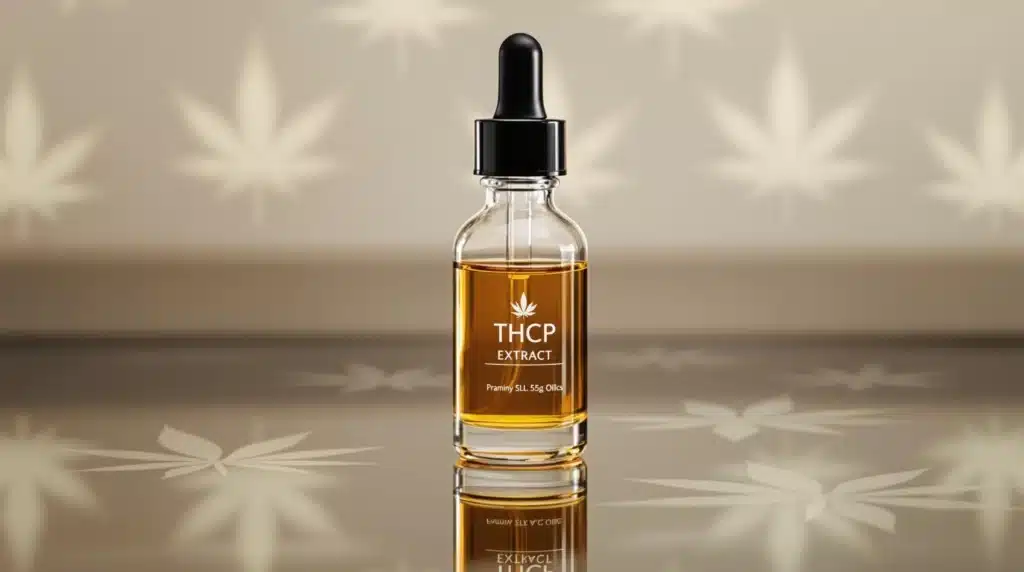
THCP vs. THC: Key Differences
Although THCP and THC share a similar molecular structure, their effects and potential applications vary significantly.
| Aspect | THCP | THC |
| Potency | Up to 33 times stronger | Standard psychoactive effects |
| Binding Affinity | High (CB1 and CB2 receptors) | Moderate |
| Natural Levels | Rarely found in significant quantities | Found abundantly |
| Psychoactivity | Potentially higher | Mild to strong |
Understanding the Potency Gap
The heightened potency of THCP may provide greater effects with smaller doses, making it a promising candidate for medical applications. For example, patients requiring higher THC doses might achieve the same relief with less THCP. This efficiency could also make THCP products more cost-effective in the long run.
On the recreational side, THCP’s intense psychoactivity could be appealing for experienced users seeking new cannabis experiences. However, it also requires careful handling to avoid potential adverse reactions, such as heightened anxiety or overstimulation.
Availability in the Cannabis Market
THCP is still in its infancy when it comes to availability in consumer products. Due to its rarity and the complex extraction process, it is primarily found in specialty products or experimental formulations. As interest grows, researchers and manufacturers may work toward integrating THCP into more mainstream cannabis offerings.
How is THCP Extracted?
THCP is typically extracted from cannabis plants using advanced chromatographic techniques. These methods allow scientists to isolate and analyze cannabinoids at the molecular level. The process involves:
- Plant Material Selection: Cannabis strains with diverse cannabinoid profiles are preferred.
- Cannabinoid Isolation: Advanced equipment separates THCP from other cannabinoids.
- Testing and Verification: Each sample is rigorously tested to confirm its purity and concentration.
The Complexity of Extraction
Extracting THCP requires sophisticated technology and expertise due to its low natural abundance. Using high-grade equipment like liquid chromatography, scientists can identify and isolate small amounts of THCP. This meticulous process ensures that the final product is both pure and potent.
The extraction process also emphasizes the importance of sourcing high-quality cannabis plants. Strains with varied cannabinoid profiles may yield better results, providing a richer source of rare compounds like THCP.
Synthetic Production and Research
In addition to natural extraction, researchers have begun exploring synthetic methods to produce THCP. This approach allows scientists to study the compound more extensively without relying solely on rare plant material. Synthetic production also opens the door to creating standardized THCP formulations for medical and research purposes.
The Science Behind THCP
The discovery of THCP was first reported in 2019 by Italian researchers studying the chemical composition of cannabis. Their findings revealed that THCP interacts with the human endocannabinoid system (ECS) more effectively than THC. The ECS regulates vital functions such as mood, pain sensation, and immune response, which underscores the potential significance of THCP.
Implications for Medical Cannabis
THCP’s heightened potency could open doors for its use in medical cannabis products. Its strong binding affinity suggests it may be particularly effective for conditions requiring high doses of THC, such as chronic pain or severe nausea. This makes it an exciting area of exploration for those developing targeted cannabis therapies.
Challenges in Research
Despite its potential, the scarcity of THCP and the novelty of its discovery pose challenges. More studies are needed to determine its safety profile, therapeutic applications, and long-term effects. Ethical considerations, legal restrictions, and the need for advanced technology further complicate research efforts.
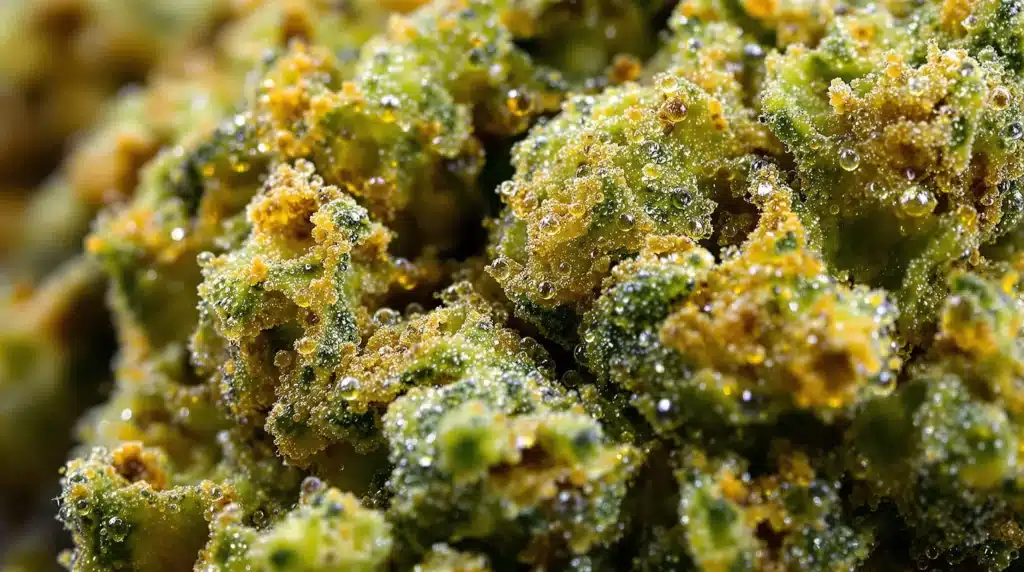
FAQs About THCP
What is THCP’s legal status?
The legality of THCP varies depending on the jurisdiction. In regions where cannabis is broadly legalized, THCP may fall under the same regulations as THC. However, in countries or states with stricter cannabis laws, THCP could be classified as a controlled substance. It is essential to research local laws and consult legal experts before purchasing or using THCP products.
Is THCP safe to consume?
THCP is generally considered safe at low doses, but its heightened potency means it can cause stronger psychoactive effects than THC. Potential side effects include dry mouth, dizziness, anxiety, or increased heart rate. Individuals new to cannabis or with low tolerance levels should proceed with caution. Always consult a healthcare professional before using any new cannabinoid product.
How does THCP affect the body?
THCP affects the body by binding strongly to CB1 and CB2 receptors in the endocannabinoid system. This interaction can result in intense psychoactive effects, deeper relaxation, and potential therapeutic benefits such as pain relief and appetite stimulation. Due to its strong receptor affinity, its effects may last longer and feel more pronounced compared to THC.
THCP products are currently limited to specialized markets and research-oriented manufacturers. Some high-end dispensaries and cannabis brands may carry products containing THCP, often labeled as experimental or boutique items. As research expands, availability is likely to increase, with a wider range of products expected in the future.

